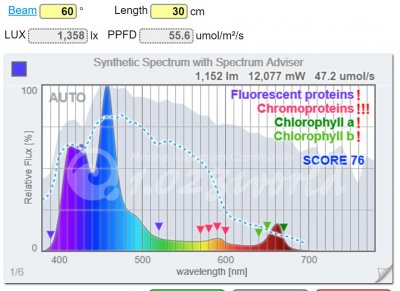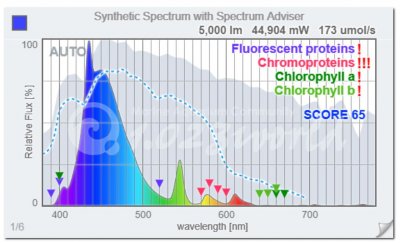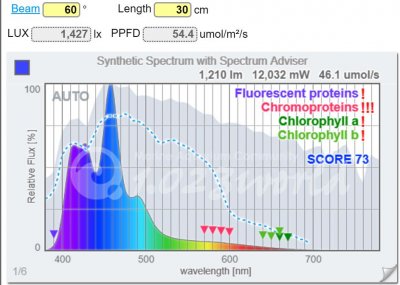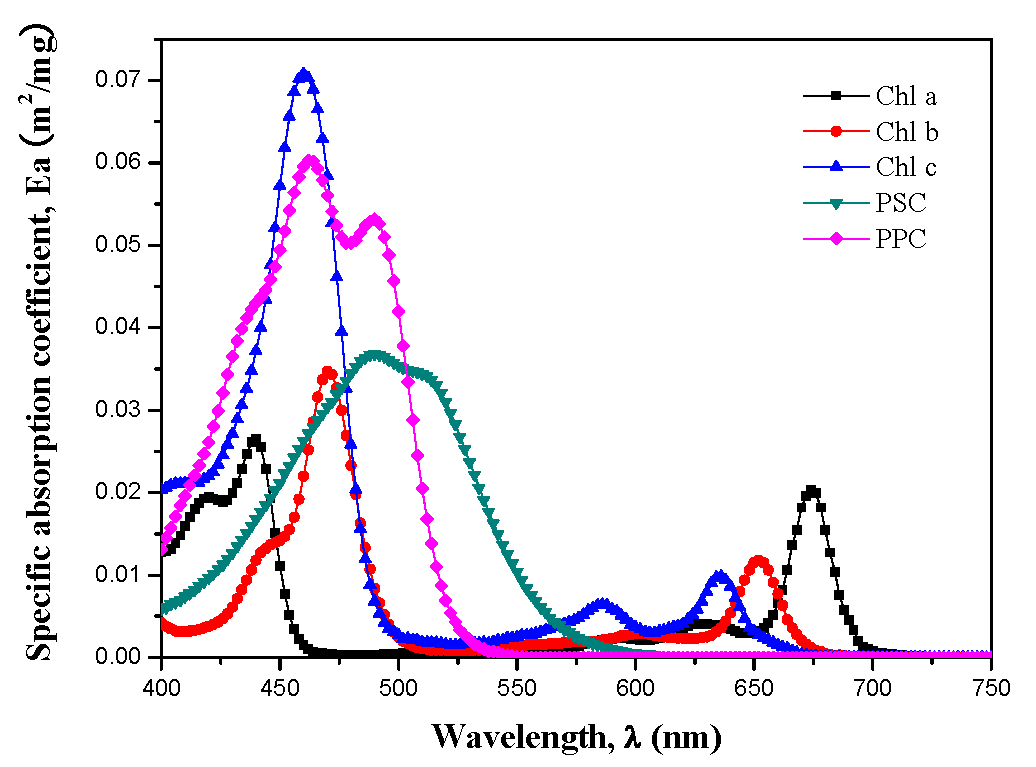I'm working with @James Emory (I believe) to pick out a custom arrangement of LEDs for two of their Orphek )R 120 light bars. I'm looking for something around the 25K look, the light bars will be over my frag tank and the health of the corals is very important.
Each light bar has 36 - 3 watt LEDs. The available LED colors are:
6300K
12,000K
410
430
460
490
595
630
660
730
Since the light has no dimming, I want to try to achieve the 25K with the mix of LEDs. Below is the combination of LEDs that I think I've settled on but I'd like opinions on it before placing the order.
12000K - 5
660nm - 2
595nm - 1
490nm - 4
460nm - 13
430nm - 6
410nm - 5
So what are everyone's thoughts? Thanks!
Each light bar has 36 - 3 watt LEDs. The available LED colors are:
6300K
12,000K
410
430
460
490
595
630
660
730
Since the light has no dimming, I want to try to achieve the 25K with the mix of LEDs. Below is the combination of LEDs that I think I've settled on but I'd like opinions on it before placing the order.
12000K - 5
660nm - 2
595nm - 1
490nm - 4
460nm - 13
430nm - 6
410nm - 5
So what are everyone's thoughts? Thanks!

























